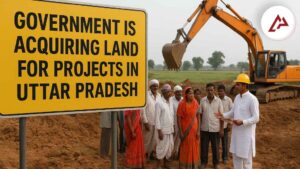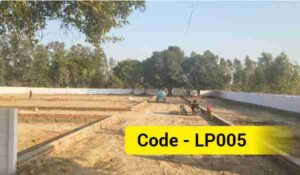Land Acquisition Act 2013: The Real Story of Farmers’ Rights!
Learn about India’s Land Acquisition Act 2013, its rules, latest updates, compensation details, and farmers’ challenges. Get the 2025 updates in simple English to understand how it balances government projects and farmers’ rights.
Imagine your family’s farmland, where you’ve worked hard for years, suddenly taken by the government for a road or factory. Scary, right? That’s where India’s Land Acquisition Act comes in. I’m here to explain this law in simple words, with the latest 2025 updates. This isn’t boring textbook stuff; it’s about real people and their lives. Let’s dive in, because development is important, but so are farmers’ rights.

History of the Land Acquisition Act: Old Rules, New Changes
Back in British times, the 1894 Land Acquisition Act allowed the government to take land easily, giving farmers very little money. Farmers protested, but no one listened. Then came the 2013 law, called the Right to Fair Compensation and Transparency in Land Acquisition, Rehabilitation and Resettlement Act (RFCTLARR Act). It started on January 1, 2014, to fix old mistakes.
Why was it made? Because the old law didn’t give farmers fair money, and losing land ruined their lives. The Land Acquisition Act follows India’s Constitution, Article 300A, which says no one’s property can be taken without a proper process. I thought, Wow, this was a big change. Now the government must think about how many people will be affected. For example, protests over projects like the Narmada Valley pushed for this law. In 2025, this act is still the main rule, though states like Assam have made some changes.
Main Rules: What Does the Land Acquisition Act Say?
Let’s get to the point. The Land Acquisition Act allows the government to take land for public projects like roads, railways, or hospitals. But the process is different now. Here are the key rules:
1. Social Impact Assessment (SIA)
-
Before taking land, the government must study how the project affects people’s lives, jobs, and the environment.
-
They hold public meetings where people can share their concerns.
-
The district collector approves the SIA report.
2. Consent Rule
-
For public-private partnership (PPP) projects, 70% of affected families must agree.
-
For private projects, 80% must agree.
-
For government projects, consent isn’t needed, but SIA is a must.
3. Compensation
-
In rural areas, farmers get four times the market value of their land; in cities, two times.
-
An extra 100% solatium (bonus amount) is added.
-
Money for damaged crops, trees, or houses is separate.
-
Under Section 96, compensation is tax-free. The Chhattisgarh High Court confirmed this in 2025.
Read More…
- Uttar Pradesh Building Construction and Development By-Laws 2025
- Laws Governing the Sale of Land by Scheduled Caste Landowners to General Category in Uttar Pradesh
- Understanding Section 80 (Section 143) of the Uttar Pradesh Revenue Code, 2006
- Succession Laws in Uttar Pradesh
- 12 Years of Possession (Adverse Possession) and the Property is Yours? The Complete Story of the Limitation Act and Supreme Court Rulings!
- The Secret of Benami Property Revealed! What Do the Supreme Court and Law Say?
4. Rehabilitation and Resettlement (R&R)
-
Families who lose land get a new house, job, or one-time payment.
-
Special rules for SC/ST families, like giving them alternative land.
-
An R&R committee checks if this is done properly.
5. Time Limits and Lapse
-
The government must announce land acquisition within three years of SIA approval.
-
Section 24(2): If land was taken under the 1894 law but no money was paid or possession taken by January 1, 2014, the process is canceled.
-
Note: The Allahabad High Court (2025) said that if the Supreme Court has already approved a case, it can’t be canceled.
I met a farmer who said, “Before, we just got a notice. Now, at least they listen to us.” These rules try to balance development and fairness.
2024-2025 Updates: What’s New with the Land Acquisition Act?
In 2025, the Land Acquisition Act hasn’t changed much, but there are new court cases and state updates. Let’s see what’s happening:
-
Supreme Court Focus: Compensation must be fair and equal. In 2025, they overturned a High Court ruling that called a farmer’s appeal “too early.” Now farmers can demand more money.
-
Assam’s Changes: In 2024, Assam made SIA and other processes simpler.
-
Punjab’s Limit: They restricted taking multi-crop land to protect food security and the environment.
-
Uttar Pradesh Push: UP acquired land worth 5,500 crores for expressways, aiming for a trillion-dollar economy. Their land bank is now 25,000 acres.
-
Maharashtra: New notifications under Section 19(1) in Bhandara.
-
Digital Tools: Delhi’s Bhumi Rashi portal speeds up the process.
Overall, in 2025, the Land Acquisition Act focuses on transparency and speed, but farmers still want better compensation.
Uttar Pradesh and the Land Acquisition Act: A Closer Look
Uttar Pradesh (UP) is India’s biggest state, and the Land Acquisition Act faces its biggest test here. The Yogi government is pushing for a trillion-dollar economy, so land acquisition is fast. Some big projects:
-
Jewar Airport: The Yamuna Expressway Authority (YEIDA) took thousands of acres. SIA and R&R are in focus, but compensation delays caused disputes.
-
Ganga Expressway: A 594-km road from Meerut to Prayagraj, needing lots of land. Farmers protested.
-
Noida-Greater Noida: This area has seen protests for years because farmers feel compensation is too low.
2025 Updates:
-
UP ordered Industrial Development Authorities to allot land for investments over 100 crores in 15 days.
-
Land bank grew to 25,000 acres, with plans for mini-industrial clusters in rural areas.
-
Allahabad High Court rejected challenges to old acquisitions if the Supreme Court had already approved them.
A UP farmer told me, “Expressways are good, but we want fair money for our land.” Delays in SIA and compensation disputes are still issues.
Challenges and Problems: The Real Truth
The Land Acquisition Act is good, but it’s not perfect:
-
SIA Delays: The process is complex, slowing down projects.
-
Compensation Fights: Farmers feel they get less than the market rate, especially with rising prices.
-
Farmer Protests: Places like Noida-Greater Noida see protests that end up in court.
-
Environment: Multi-crop land acquisition is limited, but some say rules are broken.
In 2025, the Supreme Court stressed timely and fair compensation. A Madhya Pradesh case raised issues about appeal time limits. My take? The government should hold more awareness camps so farmers know their rights.
Future of the Land Acquisition Act: What’s Next?
Looking ahead, the Land Acquisition Act will likely go more digital, like Delhi’s Bhumi Rashi portal. State changes might make processes easier. But farmers need better R&R packages and clearer rules. In 2025, India’s growth will be fast, but this law will keep things balanced.
Conclusion
The Land Acquisition Act is key to India’s growth, but it must be fair. If you’re a farmer or curious, check your local rules.
Do you think this law helps farmers? Share your thoughts and spread this post to raise awareness.












